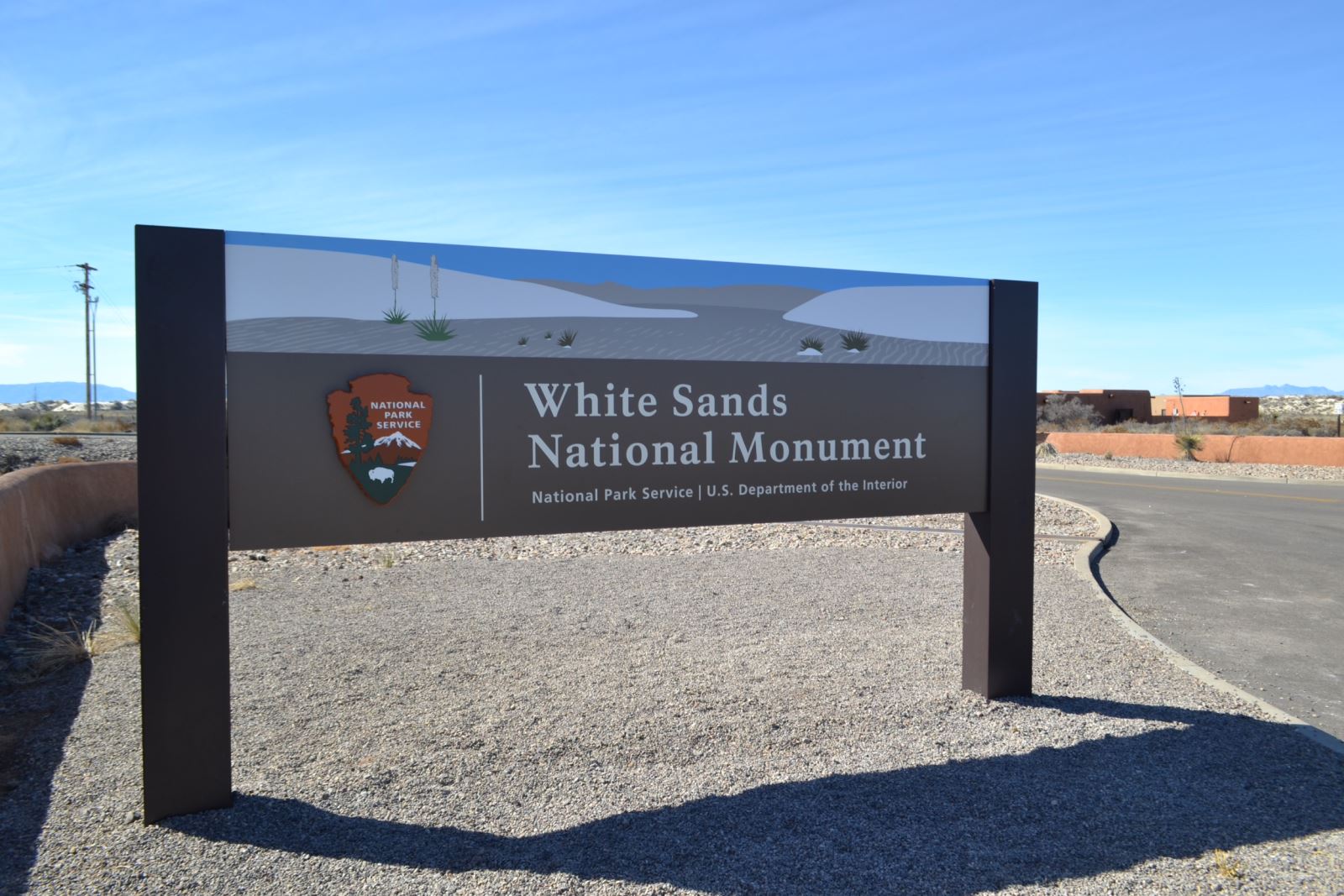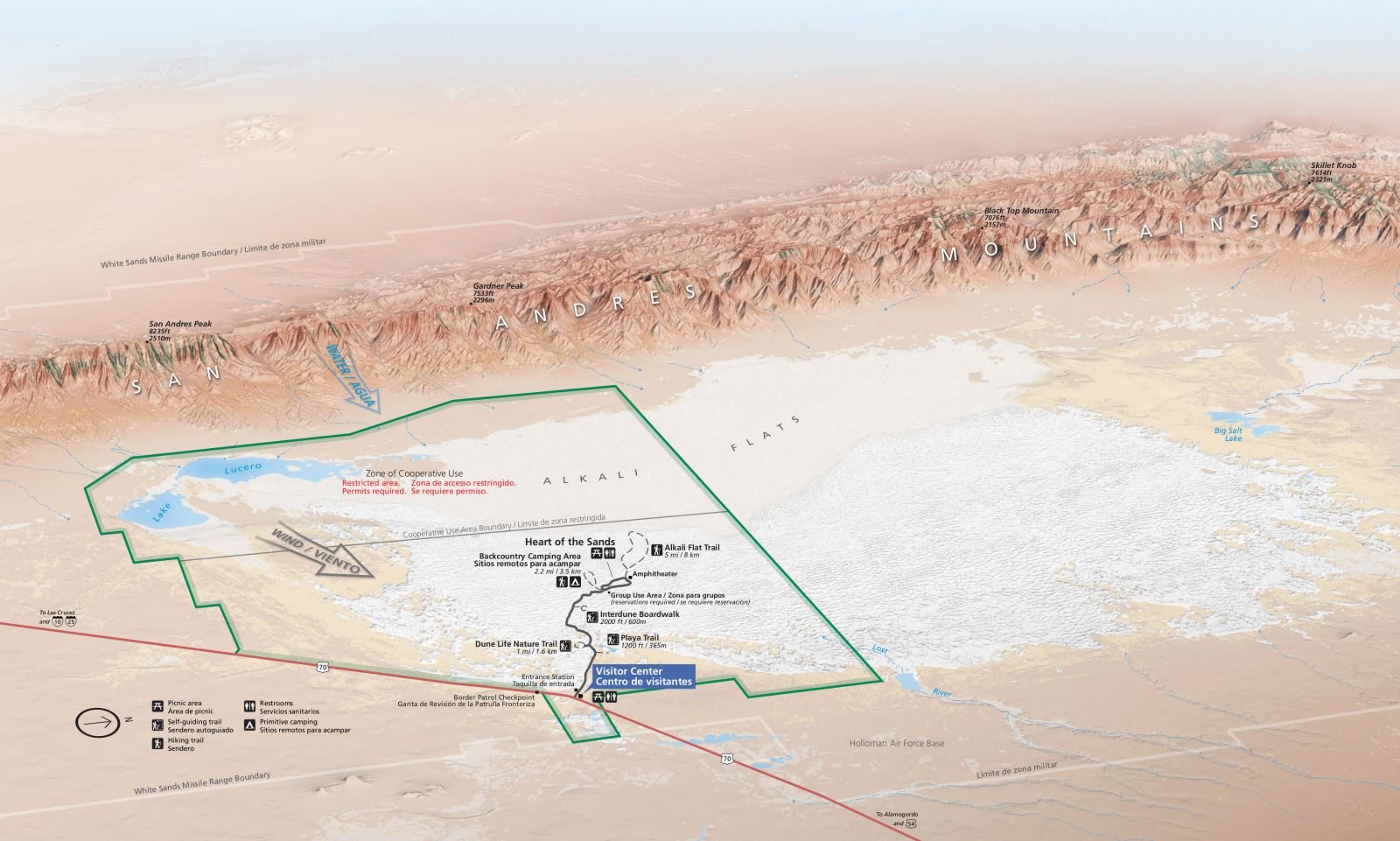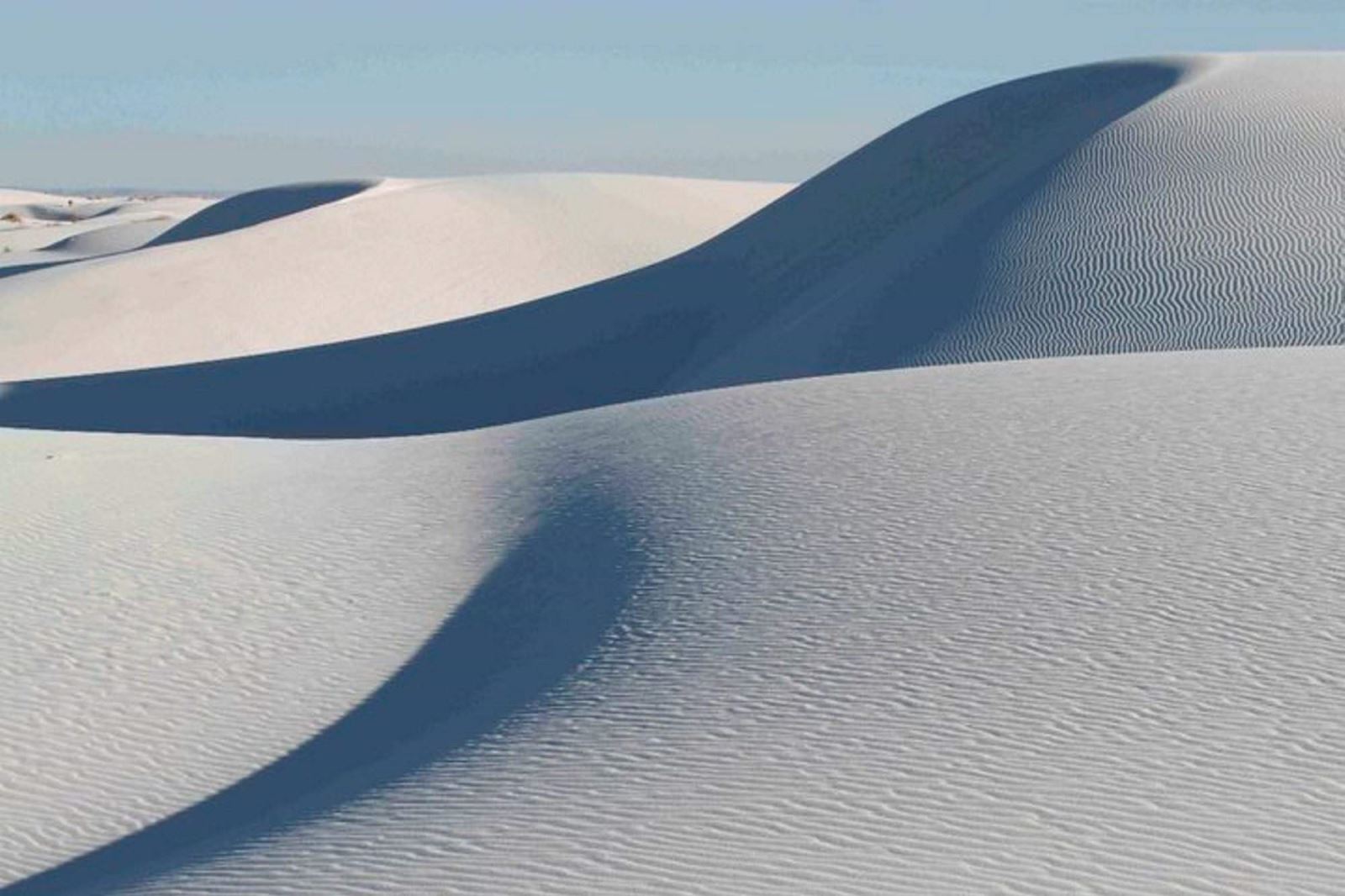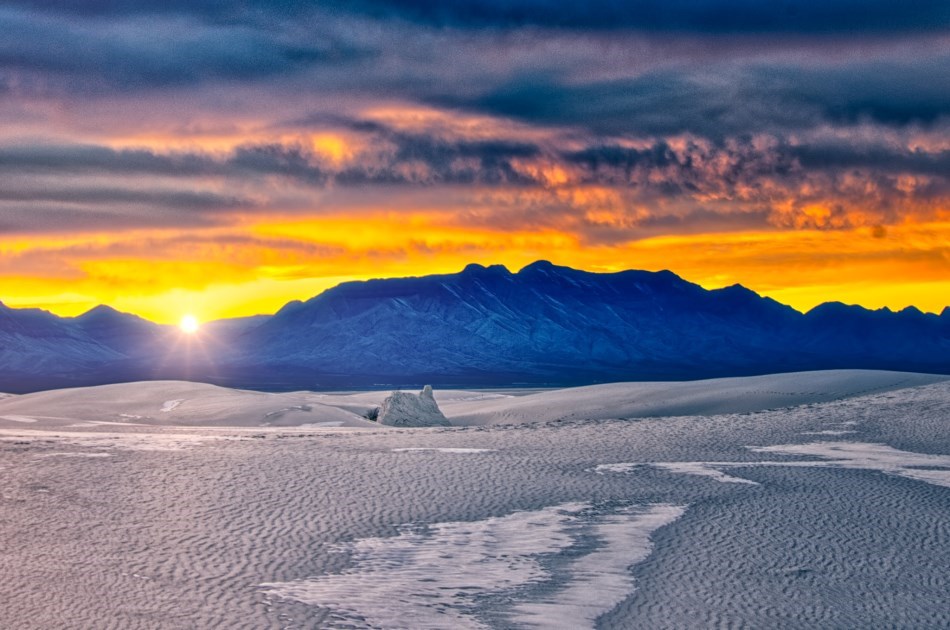
The monument is situated at an elevation of 4,235 feet (1,291 m) in the mountain-ringed Tularosa Basin and comprises the southern part of a 275 sq mi (710 km2) field of white sand dunes composed of gypsum crystals. The gypsum dune field is the largest of its kind on Earth.


A fossil trackway of footprints of humans and ground sloths dating from the last ice age shows that ground sloths lived at White Sands, and were hunted by humans at least 11,700 years ago.
The first Euro-American exploration was led by a party of US Army officers in 1849.The Mescalero Apache were already living in the area at the time. Hispanic families started farming communities in the area at Tularosa in 1861 and at La Luz in 1863.


The idea of creating a national park to protect the white sands formation dates to 1898 when a group from El Paso, Texas proposed the creation of Mescalero National Park. The plan failed as it included a game hunting preserve that conflicted with the idea of preservation held by the Department of the Interior.In 1921–22, Albert B. Fall, Secretary of the Interior and owner of a large ranch in Three Rivers northeast of the dune field, promoted the idea of an "all-year national park" that, unlike more northerly parks, would be open even in the winter. This idea ran into a number of difficulties and did not succeed. Tom Charles, an Alamogordo insurance agent and civic booster, was influenced by Fall's ideas. By emphasizing the economic benefits, Charles was able to mobilize enough support to have the national monument created.

According to wikipedia





![[HONORARY PROFESSOR OF RECORD FOR PRACTICE AND EMPIRICAL RESULTS – 2024] RECORD HOLDER CHU BAO QUE (BAC GIANG PROVINCE, VIETNAM)](https://uskings.us/wp-content/uploads/2024/05/IMG_0386-218x150.jpg)


